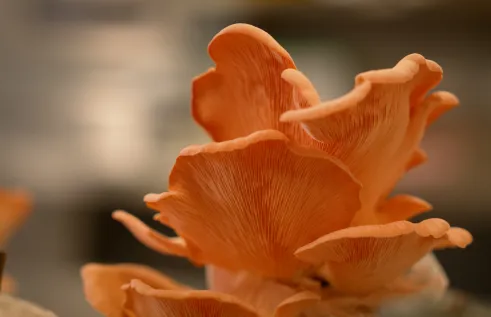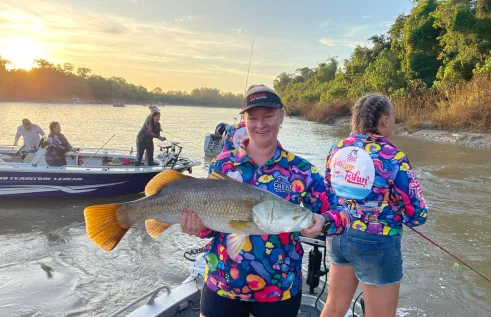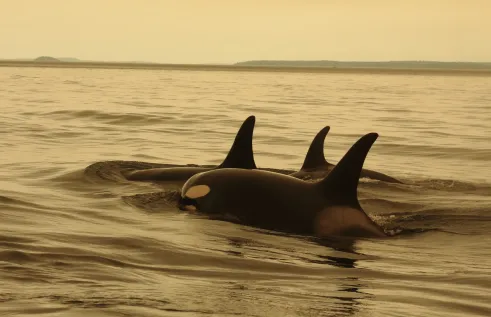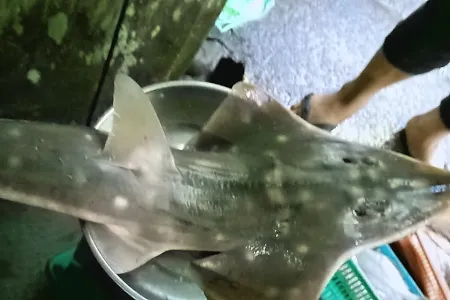News Article
Social media reveals location of threatened clown wedgefish
Researchers have used social media to reveal the geographic location of a Critically Endangered wedgefish not seen for more than two decades.
Charles Darwin University shark and ray expert Dr Peter Kyne said that wedgefish were one of the most threatened animal groups with nine out of 10 species Critically Endangered.
“The Clown Wedgefish (Rhynchobatus cooki) was only known from fish markets in Singapore and Jakarta; the wild range was completely unknown,” he said.
“It had not been seen for 23 years until a specimen was found in a Singapore fish market last year by local researchers, reportedly imported from Indonesia,” Dr Kyne said.
Sawfish Conservation Society researcher Matt McDavitt searches social media posts to understand the capture of wedgefishes in fisheries. To his surprise, he inadvertently located the first wild records of the Clown Wedgefish.
“By searching social media posts, we have been able to reveal the wild range of the species to two islands of the southwest Riau Islands in Indonesia,” Mr McDavitt said.
Dr Kyne said that understanding the range of this species was vital to aid conservation efforts.
“It is impossible to implement any conservation measures when you don’t know where a species occurs – imagine trying to save the Giant Panda (classified as being at a lower risk of extinction than the Clown Wedgefish) if you didn’t know it lived in China and liked bamboo,” he said.
“The small number of records provides the first indication of this threatened species’ range. It remains unknown if the species is restricted to this small part of Indonesia, or if it occurs more widely.”
Mr McDavitt said the catches posted on social media were from local small-scale fisheries but that it brought to light the significant conservation issue of the shark-fin trade.
“Wedgefish fins are amongst the highest value elasmobranch fin products and despite its small size, there are indications that the Clown Wedgefish enters the international shark-fin trade,” he said.
Dr Kyne is an internationally recognised shark and ray expert. He was a co-author on the species description (which used old specimens), alongside researchers from CSIRO. Dr Kyne is lead author on all 10 wedgefish assessments for the IUCN Red List of Threatened Species. Mr McDavitt is an anthropologist using internet tools to understand trade and distributions of highly threatened rays.
The paper “Social media posts reveal the geographic range of the Critically Endangered Clown Wedgefish Rhynchobatus cooki” is published in the Journal of Fish Biology.
Related Articles

Cotton trash to treasure: Project using waste to grow new mushroom industry
Supermarket shelves could be stocked with mushrooms grown from the Northern Territory’s cotton waste, with a Charles Darwin University research project exploring the possibility of broadening the region’s agricultural industry.
Read more about Cotton trash to treasure: Project using waste to grow new mushroom industry
Stereotypes holding back Australia’s recreational fishing future, new study finds
Outdated stereotypes about who a “real fisher” is could be costing Australia’s recreational fishing industry valuable talent, creativity, and growth, new research from Charles Darwin University suggests.
Read more about Stereotypes holding back Australia’s recreational fishing future, new study finds
Global body adopts policy to protect Earth’s old, wise and large animals
The International Union for Conservation of Nature (IUCN) has recognised Charles Darwin University-led research into the Earth’s oldest animals with the adoption of the ‘Longevity Conservation’ global policy principle.
Read more about Global body adopts policy to protect Earth’s old, wise and large animals
